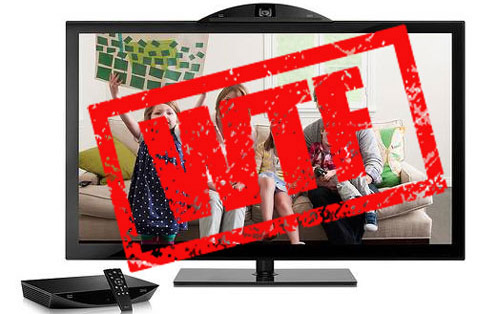
04/22/2011
Gadgets Channel / Bullz-Eye Home
To say that Cisco misunderstands the consumer tech market would be like saying NBA players misunderstand what constitutes consent. The company decided just over a week ago to kill off the Flip video, a line of consumer camcorders that Cisco purchased for some $590 million. The key word there is kill, as in kaput - no more Flip. Cisco isn’t even going to try to sell the camcorder line to another company, and probably for good reason - there isn’t a company on the planet that would buy it. Instead, Cisco is simply throwing it away, along with 550 jobs as part of an attempt to refocus the company.
 Cisco should have known better, too. For a company that has dealt with some level of consumer tech for more than 15 years (Linksys was founded in 1995), the Flip move was remarkably dumb. I would have loved to sit in on the meeting in which Cisco offered nearly $600 million for a product that had a very obvious expiration date in the very near future. How do you look at a company that keeps buying up smaller and smaller sensors and not think, ‘Gee, do you think some one will put this in a phone one day, fellas?’ As a matter of fact, let me lay this out for the neanderthals Cisco has running its investments - if you want to buy a piece of tech today, ask yourself whether or not it’s feasible to put that feature into a phone in the near future.
Cisco should have known better, too. For a company that has dealt with some level of consumer tech for more than 15 years (Linksys was founded in 1995), the Flip move was remarkably dumb. I would have loved to sit in on the meeting in which Cisco offered nearly $600 million for a product that had a very obvious expiration date in the very near future. How do you look at a company that keeps buying up smaller and smaller sensors and not think, ‘Gee, do you think some one will put this in a phone one day, fellas?’ As a matter of fact, let me lay this out for the neanderthals Cisco has running its investments - if you want to buy a piece of tech today, ask yourself whether or not it’s feasible to put that feature into a phone in the near future.
As a matter of fact, all of Cisco should be asking itself that question, which could easily be paraphrased as “how mobile are we?” Sure, the mobile broadband market might be developing at a glacial pace, but if you’ve been in an airport recently, you know how many cell phones double as routers. That tethering has a bandwidth cap now, but what if mobile providers realize they can replace your cable internet if you have the right phone. Is it possible for a phone to suddenly become the hub of home entertainment? Absolutely. Don’t give me any of this “phones can’t replace a powerful router” mumbo jumbo, either. You should know better than to tempt fate, router nerds.
The Flip situation should actually have quite a few of the world’s largest tech companies in a panic. Cisco has made its name in the tech world, granted mostly on the enterprise side of the market, but it’s having trouble keeping up with that same world. If you had asked me 15 years ago if Cisco could possibly be suffering from a lack of foresight, I would have said, “I’m 12 - why are you asking me about corporate financial planning?” If I had somehow chronoported my current self back there, I would have said no. Cisco used to have a keen eye for consumer computing - that’s why we have Linksys today. The company saw the potential for home network growth and made a great move on an undeveloped market.

So why the sudden focus on hugely overdeveloped markets? It’s not like camcorders were tough to come by when Cisco bought Flip. And what of Umi, the video conference box meant for home use that cost a whopping $599 plus a $275 annual service fee? All it did was make HD video calls, something Skype is totally capable of doing for free. Seriously, how did that pricing structure ever escape someone’s mouth? I would have slapped anyone suggesting those kind of fees for a consumer device that - once again - duplicates existing consumer solutions before it could even be said, let alone implemented.
For now, I think the unfortunate truth is that most corporate structures aggressively combat innovation at every turn. With a somewhat volatile economy, the problem only gets worse. Companies like Cisco make seemingly safe short term bets on products like the Flip, only to realize the loss a couple years, or in some cases a couple months later. This isn’t only true of Cisco, it’s rampant in the tech industry. There was the infamous article in the New York Times last year in which several Microsoft employees claimed the company actually stifled innovation. Take a look at Google’s most recent social efforts - Buzz and Wave - both of which were total failures. If Google can’t figure out how to streamline the innovative process, it’s hard to imagine who can. It certainly isn’t Cisco.
You can follow us on Twitter and Facebook for content updates. Also, sign up for our email list for weekly updates and check us out on Google+ as well.









